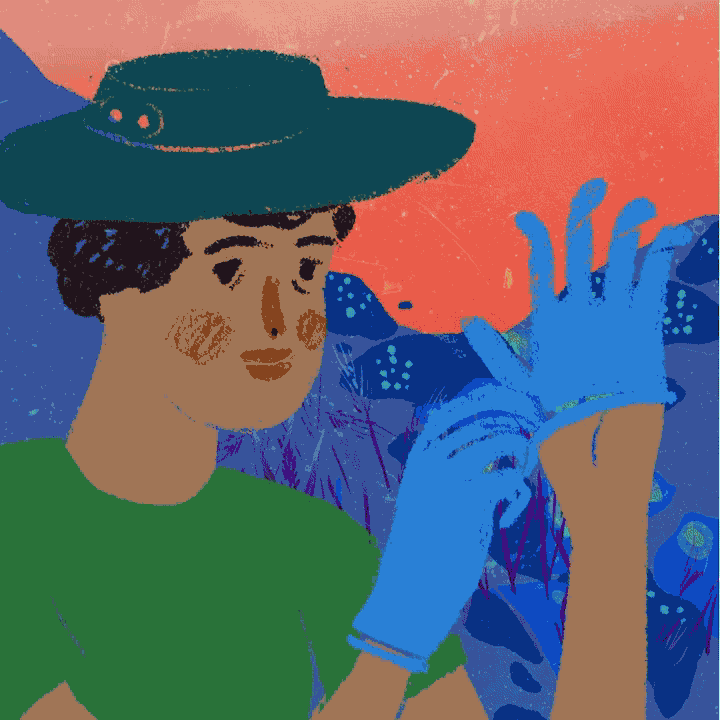Quick Guide to the CALeDNA App and Kit
Remember to follow your safety training whenever entering a new location. Be aware of your surroundings and avoid potential dangers or entering prohibited areas.
Follow the map to your sampling site or choose sites you think would be interesting to sample.
Please remember:
Select sites that are off the trail or any thoroughfare.
The sites you select should be at least 100 paces apart.
Try to sample different habitats.
Record the site and kit information in the app webform.
Remember:
Record the label on the tube.
Take GPS Coordinates to a resolution of <50m.
If possible, take notes on environmental parameters.
At each sampling site you will use a new pair of gloves and a whirlpak with 3 tubes. These 3 tubes are biological replicates. Replicates should be collected from about a foot apart from each other. Be sure to always keep the tubes in the same whirlpak together.
Put on your gloves. Fill each of the 3 tubes with either soil (see below) or sediment (see step 5). Sediment is like soil, but is covered by water (e.g. the bottom of a stream or lake).
Step by step procedure:
Put on your gloves.
Clear debris or leaf litter with a stick
Fill the tube with soil to the 1.8mL mark by scraping the surface soil with the tube.
Repeat step 3 for the other replicate tubes with soil from about 1 foot apart in a triangle or line.
Place closed tubes in whirlpak. Seal the bag by rolling the top of the bag and twisting the yellow tie, and place in the CALeDNA Box provided.
Dispose of gloves in trash bag and try to keep items you've used separate from the clean ones.
Put on your gloves. Fill each of the 3 tubes with either sediment (see below) or soil (see step 4).
Sediment is like soil covered by water found the bottom of a stream or lake. Collect sediments using the scoop straws. Scoop the top layer of sediment and then drain excess water from the end of the straw (side opposite the scoop). Place the sediment in a tube. Repeat until tube is 80% full. After sampling the three replicates (approx. 1 feet apart in a triangle or line) place the tubes in a whirl pack and seal the bag by rolling the top of the bag and twisting the yellow tie.
Step by step:
Put on your gloves.
Take scoop straw out of packaging or just be prepared to scrape sediment with the collection tube itself.
Scoop the top layer of sediment and then drain excess water from the end of the straw (side opposite the scoop). Place the sediment in a tube and repeat until you fill the tube with with sediment to the 1.8mL mark.
Repeat step 3 for the other replicate tubes with sediment from about 1 foot apart in a triangle or line.
Place closed tubes in whirlpak, seal whirlpak and place in the CALeDNA Box provided and place the box in your backpack for storage
Place used straws, straw wrapping, and gloves in trash bag and try to keep items you've used separate from the clean ones.
Optional: Use a water meter or soil meter to collect additional information and record it in the app.
Take one photo that you think best captures the ecosystem you sampled in and upload.
Record any additional notes or observations that you think might be relevant (e.g. you forgot to put your gloves on, dropped the top of the tube, the tube fell in a pond, the site had poison oak, you saw a bear, squirrel, fish, etc.).
Use iNaturalist to take photos of unique species present at the sampling site (https://www.inaturalist.org/projects/caledna).
Alternatively, you can list species you know within the webform or on paper.
Be sure everything from your CALeDNA kit is packed. Walk 40-75m (50-100 paces) to a different site, if available, and repeat steps 1-8.
If you are done sampling, remember to pack out your CALeDNA kit and your trash (including used gloves, scoop straws, etc).
When done sampling:
If you picked up your eDNA kit from CAleDNA personnel or the UC Reserve Manager please return it to them.
If you were sent your eDNA kit please keep it at room temperature, out of direct sunlight. If it will take you a couple of days to send the eDNA kit to us please keep it in the fridge. Regardless, send the eDNA kit to us as soon as possible so that the eDNA doesn’t degrade and the microbial community within the sample can’t adapt and change due to their new environment (the vial). You’ll find a return postage label in the box so all you need to do is stick that to the front of the box, tape the box up securely, and drop it in a mailbox or take it to your local post office.
In case something happens to the return label, our return address is below. We will reimburse you for shipping.
To: CALeDNA, attn: Anna Worth
Coastal Biology Building, UCSC
130 McAllister Way rm 143
Santa Cruz, CA 95060

















